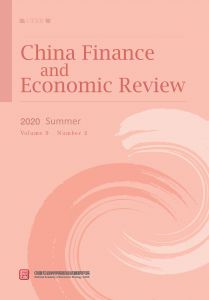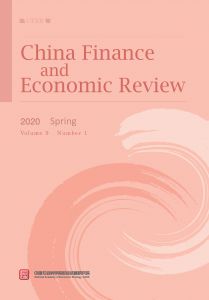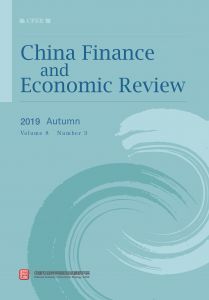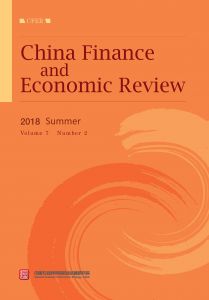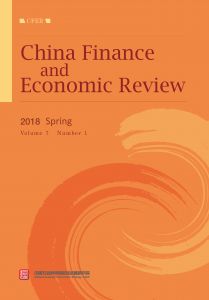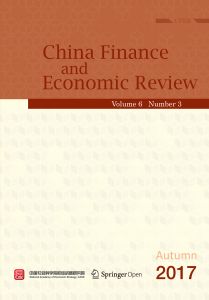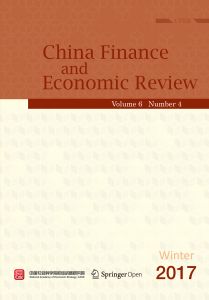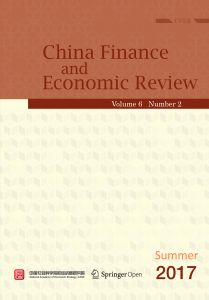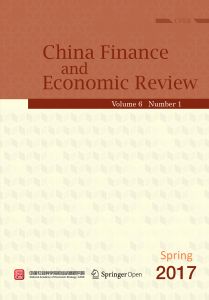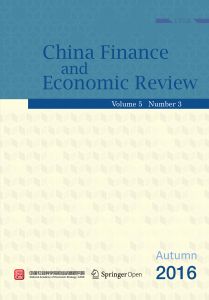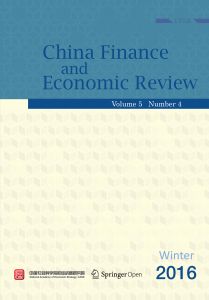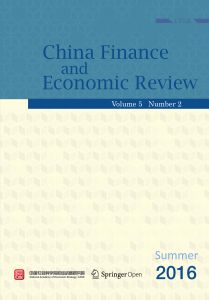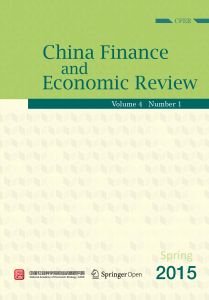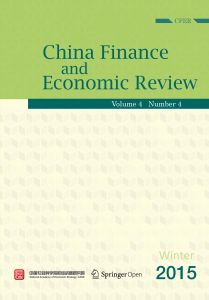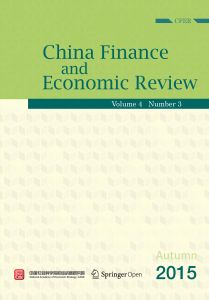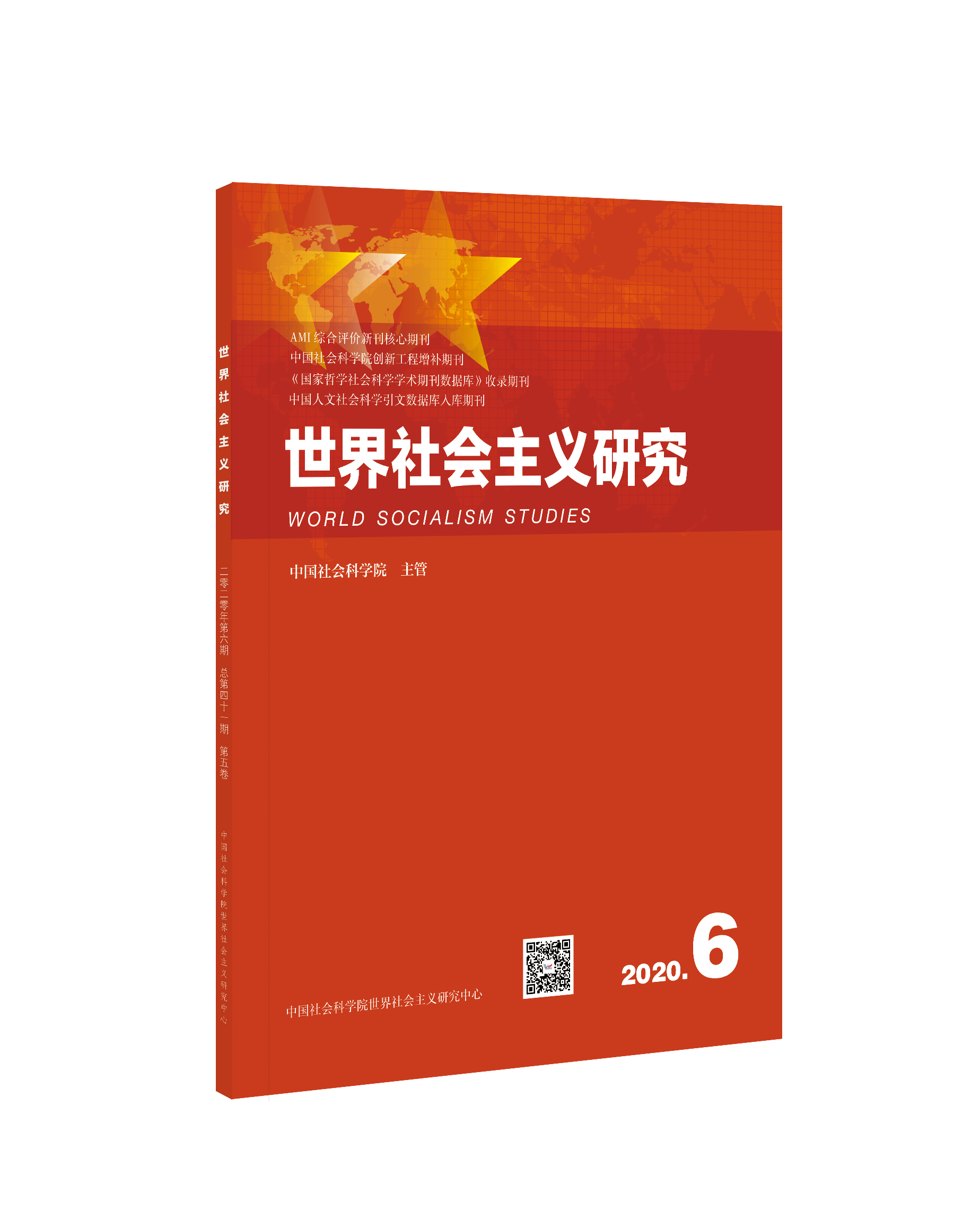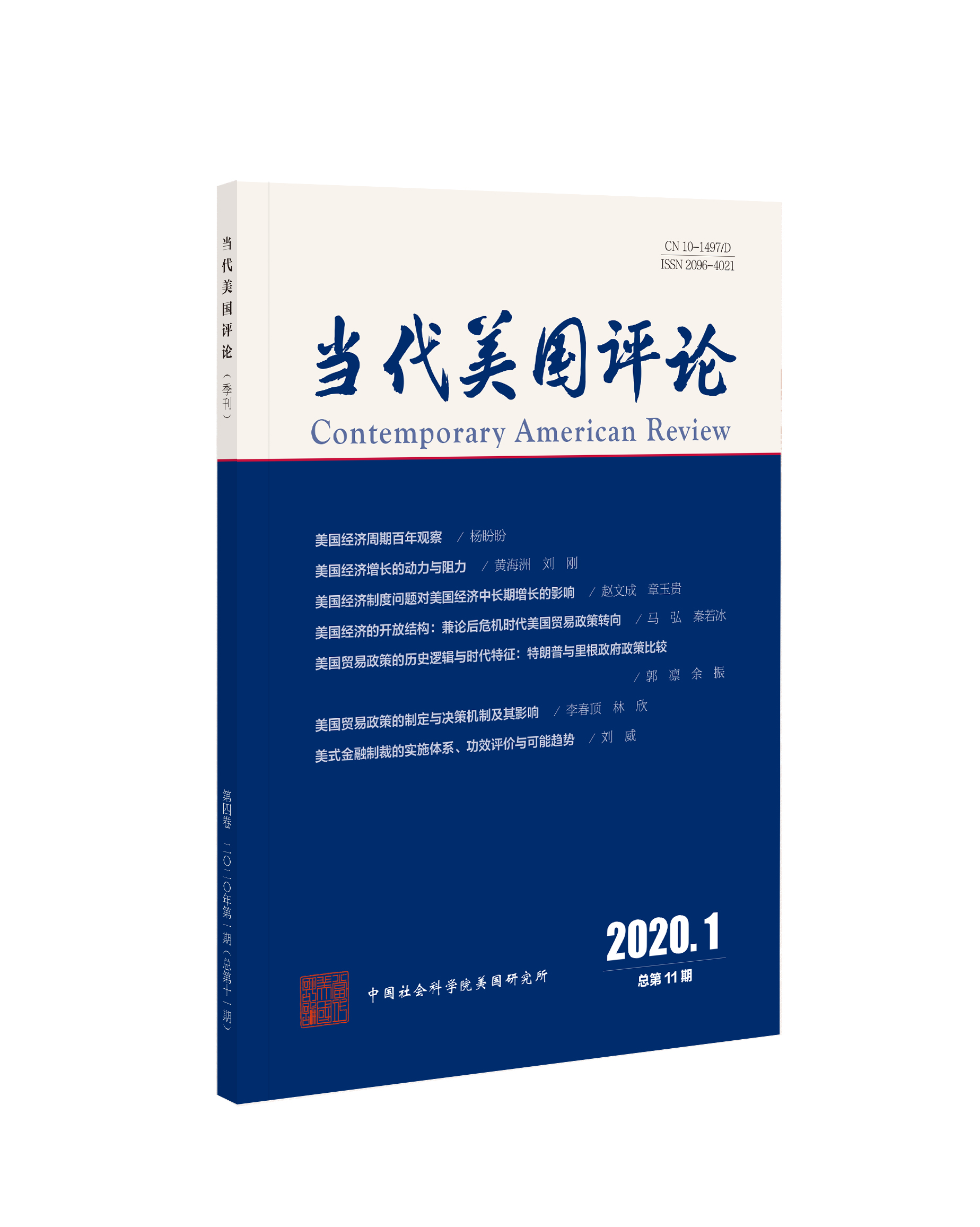最新期刊
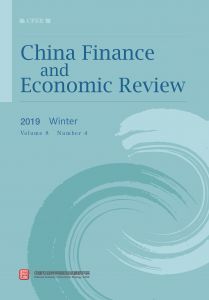
目录
过往期刊
参考文献
-
Instructions for Authors
-
编委会
-
China’s Monetary Policy Framework in the Past 70 Years: 1949—2019
-
1. Introduction
-
2. Historical Transformation of Monetary Policy Framework
-
3. Transformation of Monetary Policy Framework and New Characteristics amid the Comprehensively Deepened Reform (since 2013)
-
4. Challenges for Chinese Monetary Policy Framework and Direction of Transformation in the Future
-
-
China’s Fiscal Policy in the Past Seven Decades: Characteristics, Experience and Prospects
-
1. Introduction
-
2. Characteristics at Different Stages
-
3. Summary of Experience
-
4. Fiscal Policy for the Future
-
5. Conclusion
-
-
Local Government Debt Governance in China in the Past 70 Years: Review and Prospect
-
1. Introduction
-
2. Review of Local Government Debt Governance in the Past 70 Years
-
3. Evolvement Characteristics of Debt in the Period of Debt Governance Mode Transformation: Observations and Enlightenment
-
4. Strategic Prospect of Local Government Debt Governance in the New Era
-
-
Review, Experience Summary and Prospect of Fiscal and Monetary Policy Coordination Paradigm in the 70 Years of People’s Republic of China
-
1. Introduction
-
2. Review of Regulatory Paradigms of Fiscal and Monetary Policies
-
3. Experience and Deficiency of Regulatory Paradigms of Fiscal and Monetary Policies in the past 70 Years
-
4. Innovation and Prospect of China’s Fiscal-Monetary Policy Coordination Mechanism in the New Era
-
-
Local Government Debt in China: Development in Seven Decades, Current Situation, and Reform Suggestions
-
1. Review of the Development of Local Government Debt in Seven Decades
-
2. Existing Problems and Challenges of Local Government Debt
-
3. Policy Suggestions for Future Reform
-
-
How Do Rising Labor Costs Affect China’s Industrialization?
-
1. Introduction and Literature Review
-
2. Action Mechanism of Labor Costs and “De-Industrialization”
-
3. Research Design
-
4. Empirical Results and Discussions
-
5. Conclusions and Implications
-
-
Optimization of Coordinated Water Resource Management in Beijing-Tianjin-Hebei Region from the Perspective of Water Accounting
-
1. Introduction
-
2. Water Problems and Water Accounting in the Beijing-Tianjin-Hebei Region
-
3. Review Water Resource Accounting and Management, and Innovate Water Accounting System
-
4. A Case Study
-
5. Concluding Remarks
-
按年份浏览:
- 全部
- 2020
- 2019
- 2018
- 2017
- 2016
- 2015
- 2014
- 2013
[1][1]Chen, Y. (1995). The Selected Works of Chen Yun (Vol. II, Vol. III) . Beijing: People’s Publishing House. (in Chinese)
[2][2]Feng, M., & Yang, H. (2018). Transformation of the Base Money Creation Mechanism. China Finance (Zhongguo Jinrong) , 8, 29-30.
[3][3]Feng, X. M. (2018). “Twisted Operation” in Money Creation and Deposit-Reserve Ratio Policies. Financial View (Jinrong Bolan) , 7, 36-37.
[4][4]Goodhart, C. (1988). The Evolution of Central Banks . Cambridge MA: MIT Press.
[5][5]He, D. X. (2015). New Framework of Monetary Policy. China Economic Report (Zhongguo Jingji Baogao) , 1, 89-91.
[6][6]Issing, O. (2011). Lessons for Monetary Policy: What Should the Consensus Be? Globalization & Monetary Policy Institute Working Paper, No.11 (97).
[7][7]Jiang, C., Si, D. K., & Li, X. L. (2018). Dynamic RMB Exchange Rate Determination Based on the Expanded Taylor Rule Model of Exchange Rate: Theoretical Analysis and Empirical Studies. Journal of Financial Research (Jinrong Yanjiu) , 2, 82-99.
[8][8]Liu, J. Q., & Zhang, X. Y. (2012). Empirical Studies on the Time-Varying Parameter Taylor Rule in China’s Monetary Policy Operation. Management World (Guanli Shijie) , 7, 20-28.
[9][9]Ma, J., & Guan, T. (2018). Interest Rate Liberalization and Reform of Monetary Policy Framework . Beijing: China Financial Publishing House. (in Chinese)
[10][10]Mishkin, F. S. (2010). Monetary Policy Strategy: Lessons from the Crisis. 6th ECB Central Banking Conference.
[11][11]Song, Y. H., & Li, Z. X. (2007). Empirical Studies on Validity of McCallum Rule in China. Journal of Financial Research (Jinrong Yanjiu) , 5, 49-61.
[12][12]Sun, G. F. (2017). New Framework of Global Monetary Policy in the Post-Crisis Era. Studies of International Finance (Guoji Jinrong Yanjiu) , 12, 47-52.
[13][13]Task Force of Banking Administration Department of the People’s Bank of China. (2009). Empirical Studies on Non-Linear Taylor Rule in China’s Monetary Policy Operation. Journal of Financial Research (Jinrong Yanjiu) , 12, 30-44.
[14][14]The People’s Bank of China. (2008). 60 Years of the People’s Bank of China: 1948 —2008 . Beijing: China Financial Publishing House. (in Chinese)
[15][15]Wang, S., & Zou, H. F. (2006). Taylor Rule in Open Economy: Test on China’s Monetary Policy. Statistical Research (Tongji Yanjiu) , 3, 42-46.
[16][16]Xie, P., & Luo, X. (2002). Taylor Rule and Its Test in China’s Monetary Policy. Economic Research Journal (Jingji Yanjiu) , 3, 3-12.
[17][17]Xue, M. Q., & Wu, K. T. (1985). Struggles to Stabilize Prices before and after the Founding of New China. Economic Research Journal (Jingji Yanjiu) , 2, 33-41.
[18][18]Yi, G. (2016). China’s Monetary Policy during Transition. In Wu, G., & Li, B. Money, Interest Rate and Policy Transition . Beijing: China Financial Publishing House. (in Chinese)
[19][19]Zhang, P., Xu, Y. J., & Lin, G. J. (2010). Review on the Monetary Policy in the Planned Economy of China: 1952—1978. Researches in Chinese Economic History (Zhongguo Jingjishi Yanjiu) , 3,116-122.
[20][20]Zheng, T. G., & Liu, J. Q. (2010). Taylor Rule in the Regime-Switching Form and Its Application in China’s Monetary Policy. Economic Research Journal (Jingji Yanjiu) , 3, 40-52.
[21][21]Zhou, X. C. (2016). Monetary Policy with Multiple Objectives: From the Perspective of Chinese Economy in Transformation. Financial Times (Jinrong Shibao) , June 25.
[22][22]Bo, Y. (1992). Selected Works of Bo Yibo (1937—1992) . Bei jing: People’s Publishing House. (in Chinese)
[23][23]Chen, Y. (1995). Selected Works of Chen Yun (Volume II) . Beijing: People’s Publishing House. (in Chinese)
[24][24]Duan, B. D. (2018). Building an Analysis Framework for Fiscal Policy under New Macroconditions. Financial Minds (Caijing Zhiku) , 1, 109-131.
[25][25]Editorial Board. (2011). Biography of Li Xiannian : Works by Li Xiannian since the Founding of the People’s Republic of China . Beijing: Central Party Literature Press. (in Chinese)
[26][26]Editorial Board. (2011). Zhu Rongji on the Record: The Road to Reform (Volume IV) . Beijing: People’s Publishing House. (in Chinese)
[27][27]Gao, P. Y. (2006). Fiscal Conditions, Policies, and Reform (I): Summary of Major Fiscal Issues related to the Eleventh Five-Year Plan. Finance & Trade Economics (Caimao Jingji) , 1, 34-40.
[28][28]General Office of the Ministry of Finance. (1983). “State Budget and Final Accounts of State Revenue and Expenditure (1950—1981)” (Fiscal History of the People’s Republic of China , second volume). Beijing: China Fin ancial and Economic Publishing House. (in Chinese)
[29][29]Li, M. S., & Bai, D. X. (1999). Research on China’s Fiscal Policy . Beijing: China Social Sciences Press. (in Chinese)
[30][30]Ma, H. T., & Gao, K. (2018). Study on Fiscal Policy for Transformed Driving Forces for Economic Growth. Financial Minds (Caijing Zhiku) , 2, 39-54.
[31][31]Wang, S. F. (1984). New Theory of Finance . Beijing: China Financial and Economic Publishing House. (in Chinese)
[32][32]Wang, S. F. (1989). Reform Finance . Beijing: China Financial and Economic Publishing House. (in Chinese)
[33][33]Wu, J. L.(1993). China’s Progress in Economic Reform . Beijing: Encyclopedia of China Publishing House. (in Chinese)
[34][34]Xiang, H. C., et al . (1993). China: Market Economy and Macroeconomic Regulation . Beijing: China Financial and Economic Publishing House. (in Chinese)
[35][35]Xiang, H. C., et al . (2001). China’s Proactive Fiscal Policy . Beijing: China Financial and Economic Publishing House. (in Chinese)
[36][36]Xie, F. Z. (2019). On the Acceleration of the New Industrial Revolution and the Direction of Global Governance Reform. Economic Research Journal (Jingji Yanjiu) , 7, 4-13.
[37][37]Xie, X. R. (2009). China’s Public Finance in 60 Years . Beijing: Economic Science Press. (in Chinese)
[38][38]Xu, Y. (1980). Development of Fiscal Practice and Theory in the Past 30 Years. Public Finance Research (Caizheng Yanjiu) , 1, 21-36.
[39][39]Xue, J. P., & Zhang, W. (2018). Proactive Fiscal Policy: Theoretical Development, Policy Practice and Basic Experience. Finance & Trade Economics (Caimao Jingji) , 10, 30-41.
[40][40]Yang, Z. Y. (2018). Reform and Development of China’s Fiscal System (1978—2018) . Beijing: Socia l Sciences Academic Press (China).
[41][41]Yang, Z, Y., Zhang, B., & Tang, L. M. (2017). Balance Sheet of the Chinese Government 2017 . Beijing: Social Sciences Academic Press (China). (in Chinese)
[42][42]Zhang, B. (2019). Theoretical Dimension, Policy Framework, and Realistic Choice of Tax Reduction and Cut of Charges. Public Finance Research (Caizheng Yanjiu) , 5, 7-16.
[43][43]Zhang, X. (1993). Public Finance, Plans, and Market: Comparison and Reference between China and the West . Beijing: China Financial and Economic Publishing House. (in Chinese)
[44][44]Diao, W. (2018). The Risk of Local Government Debt in China 2014—2017 . Beijing: Social Sciences Academic Press. (in Chinese)
[45][45]Gao, P. (2014). Deepen Reform to Promote Local Government Debt Governance to the New Normal. Guangming Daily (Guangming Ribao) , September 10.
[46][46]Guo, Y., Sun, Y., & He, Y. (2017). Research on Local Fiscal Leverage: Incentive Mechanism, Growth Performance, and Adjustment Principle. Economic Research Journal (Jingji Yanjiu) , 6, 169-182.
[47][47]Li, Y., & Zhang, X. (2015). The New Normal: Logic and Prospect of Economic Development. Economic Research Journal (Jingji Yanjiu) , 5, 4-19.
[48][48]Liu, K. (2018). Give Full Play to the Role of Finance to Support the Three Battles. Qiushi , 5, 31-33.
[49][49]Liu, S. (2004). Institutional Characteristic of China’s Fiscal Risk: “Big Pot of Risk”. Management World (Guanli Shijie) , 5, 39-44.
[50][50]Wang, Z. (2018). Government Intervention and “Inverted Yield Curve” in Local Government Bond Issuance. Management World (Guanli Shijie) , 11, 25-35.
[51][51]Xi, J. (2017). Secure a Decisive Victory in Building a Moderately Prosperous Society in All Respects and Strive for the Great Success of Socialism with Chinese Characteristics for a New Era. People’s Daily (Renmin Ribao) , October 28.
[52][52]Zhang, H. (2011). Review of Local Government Debt in China. Public Finance Research (Caizheng Yanjiu) , 10, 7-10.
[53][53]Zhao, M. (2002). Outline of the Fiscal and Taxation History in China (1927—2001) . Beijing: Economic Science Press. (in Chinese)
[54][54]Chen, X., & Ma, X. (2016). Debt-Deflation Risk and Coordination of Monetary and Fiscal Policies. Economic Research Journal (Jingji Yanjiu) , 8, 28-42.
[55][55]Liu, S., & Jiao, J. (2000). Coordination of Fiscal and Monetary Policies in the Context of Transition Economy. Management World (Guanli Shijie) , 2, 134-142.
[56][56]Saulo, H., Rêgo, L., & Divino, J. (2013). Fiscal and Monetary Policy Interactions: A Game Theory Approach. Annals of Operations Research , 206 (1), 341-366.
[57][57]Wang, D. (2019). Priority Goal of Chinese Economy—Seeking Growth while Maintaining Stability and the Macro Policy Orientation. Management World (Guanli Shijie) , 5, 1-8.
[58][58]Gao, P. Y. (2018). Four Decades of China’s Fiscal and Taxation Reform: Basic Trajectory, Experience and Laws. Economic Research Journal (Jingji Yanjiu) , 3, 4-20.
[59][59]Jiang, C. Q. (2010). Historical Investigation on Three Issuing Local Bonds since the Founding of the People’s Republic of China—from the Perspective of Fiscal System Change. Sub National Fiscal Research (Difang Caizheng Yanjiu) , 4, 20-25.
[60][60]National Audit Office. (2011). 2011 No.35: Audit Results of Local Government Debt . (in Chinese)
[61][61]National Debt Association of China. (2016). Annual Report of China National Debt Market 2015 . Beijing: China Financial & Economics Publishing House. (in Chinese)
[62][62]National Debt Association of China. (2017). Annual Report of China Government Bond Market 2016 . Beijing: China Financial & Economics Publishing House. (in Chinese)
[63][63]National Debt Association of China. (2018). Annual Report of China Government Bond Market 2017 . Beijing: China Financial & Economics Publishing House. (in Chinese)
[64][64]The Central Archives of the Chinese Academy of Social Sciences. (2011). Circular of the Ministry of Finance on Several Provisions of Revenue Division of Local Finance in 1958 [Excerpt], in Selected Economic Archives of the People’s Republic of China 1958—1965, Finance . Beijing: China Financial & Economics Publishing House. (in Chinese)
[65][65]Wan, L. M. (2017). A Preliminary Study on the Issuance of Local Economic Construction Bonds (1959—1961). CPC History Studies (Zhonggong Dangshi Yanjiu) , 4, 54-61.
[66][66]Acemoglu, D. (2010). When Does Labor Scarcity Encourage Innovation? Journal of Political Economy , 118 (6), 1037-1078.
[67][67]Cai, F., Wang, D., & Qu, Y. (2009). Flying Geese Paradigm of China’s Industrial Upgrading. Economic Research Journal (Jingji Yanjiu) , 9, 4-11.
[68][68]Clark, C. (1957). The Conditions of Economic Progress, London: Macmillan Press.
[69][69]He, J., & Zhang, X. (2018). Impact of Rising Labor Costs on Enterprise Innovation. The Journal of Quantitative & Technical Economics (Shuliang Jingji yu Jishu Jingji Yanjiu) , 8, 57-74.
[70][70]Huang, Q., Huang, Y., He, J., & Jiang, F. (2017). China’s Industrialization Strategy for the Middle and Upper Income Stage. Social Sciences in China (Zhongguo Shehui Kexue) , 12, 94-116.
[71][71]Kollmeyer, C. (2009). Explaining Deindustrialization: How Affluence, Productivity Growth, and Globalization Diminish Manufacturing Employment. American Journal of Sociology , 114 (6), 1644-1674.
[72][72]Liu, H., & Wang, D. (2011). Impact of Rising Labor Costs on China’s Comparative Advantage in International Competition. World Economy Studies (Shijie Jingji Yanjiu) , 3, 9-13.
[73][73]Lv, Z. (2003). Comparative Advantage of China’s Industry. China Industrial Economics (Zhongguo Gongye Jingji) , 4, 3-8.
[74][74]Ma, S. (2015). Has Rising Labor Costs Weakened China’s Export Advantage? A Comparative Study Based on Different Trade Modes and Regions. Finance and Trade Research (Caimao Yanjiu) , 4, 53-62.
[75][75]Qu, Y., Cai, F., & Zhang, X. (2013). Has the Flying Geese Paradigm Appeared? —Analysis of China’s Manufacturing Industry from 1998 to 2008. China Economic Quarterly (Jingjixue Jikan) , 12, 5-24.
[76][76]Romer, P. M. (1986). Increasing Returns and Long-Run Growth. Journal of Political Economy , 94 (1), 1002-1037.
[77][77]Rowthorn, R., & Ramaswamy, R. (1999). Growth, Trade, and Deindustrialization. IMF Staff Papers, 46 (1), 18-41.
[78][78]Wang, Q., Wang, Y., & Du, Q. (2011). Current Situation of China’s Deindustrialization. Contemporary Finance & Economics (Dangdai Caijing) , 12, 7-15.
[79][79]Wei, H., & Guo, Y. (2013). A Comparative Study on the Unit Labor Cost of China’s Manufacturing and Its International Comparison. Statistical Research (Tongji Yanjiu) , 8, 104-112.
[80][80]Wei, X., Dong, Z., & Huang, J. (2013). Does the Labor Union Improve the Share of Labor Income? Theoretical Analysis and Empirical Evidence from China’s Private Enterprises. Economic Research Journal (Jingji Yanjiu) , 8, 16-28.
[81][81]Wen, C., & Ren, G. (2015). Separation and Development of Virtual Economy and Real Economy: Evidence from Chinese Listed Companies in 2006—2013. China Industrial Economics (Zhongguo Gongye Jingji) , 12, 117-131.
[82][82]Yuan, X., & Tang, C. (2015). Labor Costs, Transaction Costs and Industrial Structure Upgrading. Journal of Zhejiang University (Humanities and Social Sciences) (Zhejiang Daxue Xuebao) , 5, 123-133.
[83][83]Yuan, Y., & Xie, R. (2014). Adjustment Effect of Industrial Structure of Environmental Regulation: Empirical Test Based on China’s Provincial Panel Data. China Industrial Economics (Zhongguo Gongye Jingji) , 8, 57-69.
[84][84]Allan, A., (2012). Is There a Role for Water Accounting in the Avoidance and Resolution of International Water Disputes? In Godfrey, J., & Chalmers, K. (Eds.), International Water Accounting: Effective Management of a Scarce Resource . Edward Elgar Publishing Inc., New York, pp. 236-254.
[85][85]Chalmers, K., Godfrey, J., & Lynch, B. (2012). Regulatory Theory Insights into the Past, Present and Future of General Purpose Water Accounting Standard Setting. Accounting, Auditing &Accountability Journal , 25(6), 1-22.
[86][86]Hughes, D., Corral, E., Nikite, W., and Muller, J.(2012). Potential for the Application of General Purpose Water Accounting in South Africa. In Godfrey, J., & Chalmers, K. (Eds.), Water Accounting: International Approaches to Policy and Decision-Making . New York: Edward Elgar Publishing Inc.
[87][87]Li, X. (2016). Problems and Countermeasures of Watershed Management in the Coordinated Development of Beijing-Tianjin-Hebei Region. Water Conservancy Development Research . 5, 1-3.
[88][88]Momblanch, A, Andreu, J., Arquiola, J., Solera, A., & Monzonís, M. (2014). Adapting Water Accounting for Integrated Water resource Management-The Jucar Water Resource System (Spain). Journal of Hydrology , 519, 3369-3385.
[89][89]Tello, E., Hazelton, J., & Cummings, L. (2016). Potential Users’ Perceptions of General Purpose Water Accounting Reports. Accounting, Auditing & Accountability Journal . 29(1), 80-110.
[90][90]United Nations Educational, Scientific, Cultural Organization. (2012). The World Water Development Report. www.unesco.org/new/en/natural-sciences.
[91][91]United Nations, European Commission, Food and Agriculture Organization, International Monetary Fund, Organisation for Economic Cooperation and Development, and the World Bank. (2012). System of Environmental-Economic Accounting 2012: Central Framework. https://unstats.un.org.
[92][92]Water Accounting Standards Board and Australia Bureau of Meteorology.(2009). Water Accounting Conceptual Framework for the preparation and presentation of General Purpose Water Accounting Reports. 16-47. www.bom.gov.au/water/wasb.
[93][93]Water Accounting Standards Board and Australia Bureau of Meteorology.(2012). Australian Water Accounting Standard 1-Preparation and Presentation of General Purpose Water Accounting Reports. 3-28.www.bom.gov. au/water/standards/wasb.
[展开]
相关推荐
手机可扫码阅读


